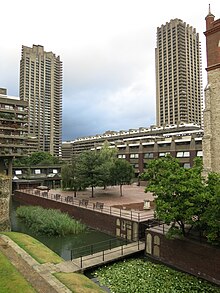In creative work or even in problem-solving situations, it’s important to balance having even the tiniest bit of structure in order to have confidence in what you’re doing, while also leaving enough openings in the work to let it “be” or let it “grow”. It’s often helpful to me in those cases to lay down a few very loose “rules” or restrictions from which start a creative activity, while leaving it open-ended, say, in a sketching session in the park, I might plan to “draw 10 things I can see that start with P”…and then see where it goes!
Really what I’m trying to stress is, at the start of things, don’t focus too much on a fruitful END; rather, focus on the idea’s SEED, plant it in a right environment, and then foster the process to let it grow. This gives the idea some legs to stand on or a root to start from, but leaves it be enough to breathe a bit, germinate, and develop… in the example of a sketchbook, we are not focused on making a good drawing here, but rather, we are using a focused approach to drawing (which may ultimately increase the chances of a successful drawing anyway).
This kind of thinking about your own creativity is simple but like almost anything you want to master, takes a bit practice!
Another element to think about, are the physical spaces you’re in when you draw. Or even, emotional spaces. Either way – there needs to be enough room (mental, emotional, physical, or otherwise) for you and your creative ideas to “breathe” and grow.
Finally, this ransom note is also about empowering YOURSELF and putting in place with your own two hands, those spaces, those ways, resources, and people that can help you foster growth in your creativity whether that’s in experience, knowledge, or some other personal goal…
Still confused about what you’re doing here? Read this…
Your TURN to DRAW!
- One practical approach to observation and mark-making where one mark leads to the next and to the next…without having to think too much about it, is the idea of “live geometry”. First, closely observe your subject, and see what basic geometric forms you can identify, such as an egg-shape for a head, cylinders for torso and arms, triangles for back and shoulders, spheres for hips, and so on. These may appear differently for every observer, and largely depends on viewpoint, so move around the subject if you have to. Lightly sketch the subject in terms of the most basic geometric forms you can see, then refine (grow the drawing from) those basic forms in stages, increasing details, and amending contours where necessary so it “makes sense”. Here, I’ve sketched the figure in basic terms of line, cylinders, wedge/triangle shapes, learning where everything kind of goes, before attempting to sketch again with a looser, livelier, and more gestural line. Not sure where the sketch is going but it definitely has possibilities…

- Another useful approach to drawing (or other creativity) is to try what I call a “limn reverie“. Aided by a meditation track or other spacey audio without much discernible melody, rhythm, or lyrics, I close my eyes, place my pen on the paper and just make one slow, continuous line for a moment or two. Then, with the pen still on the paper, I might open my eyes and continue the line. Sometimes an image or symbol suggests itself, which could be resolved before continuing the line along the page. I never know what might come out, and feel that, sometimes, these “limn reveries” are idea seeds from my subconscious mind, ready to germinate and grow.
Maybe this Ransom Note gives you a different idea? Let me know!
SHARE the LOVE
You’ve come this far, now why not
<<<<< click to share your creativity – @beware.of.artists
Not only does your creativity need YOU, but here’s a surprise, the world needs your creativity, too! By sharing your response to a Ransom Note, we are building a community who will enjoy, be inspired by, and learn from each other. Who knows, maybe some of us will “find our tribe” or even make the world that tiny bit more pleasant to be in than it was 15 minutes ago!
Talking about SPACES where you can GROW…
- The Barbican Estate in London was built in 1960s on the site of 1st c. AD Roman Londinium, which evolved over the years from a Roman fort to a Base Camp for medieval English kings to a modern centre for business and commerce, until in WWII, the area suffered extensive bomb damage. After the war, a new complex was designed to be a largely sort of city-within-a-city, and the Barbican Estate opened in 1969. The Grade II-listed estate now includes around 2,000 residential flats, public courtyards and gardens, the Barbican Centre (performance, art, and music), Museum of London, Guildhall School of Music and Drama, and the City of London School for Girls.

- “Living art” combines living materials with the human-made, such as Adrián Villar Rojas’ “Living Art Sculpture: Where The Slaves Live” in 2015, in which organic/living materials (fruit, plants, and dirt) are combined with manufactured items (plastic, shoes, pigments) to become a “…’living sculpture’ that constantly changes with passing time…echoing the dialogue between nature and architecture…”

What other artists or techniques can you think of? Let me know!






